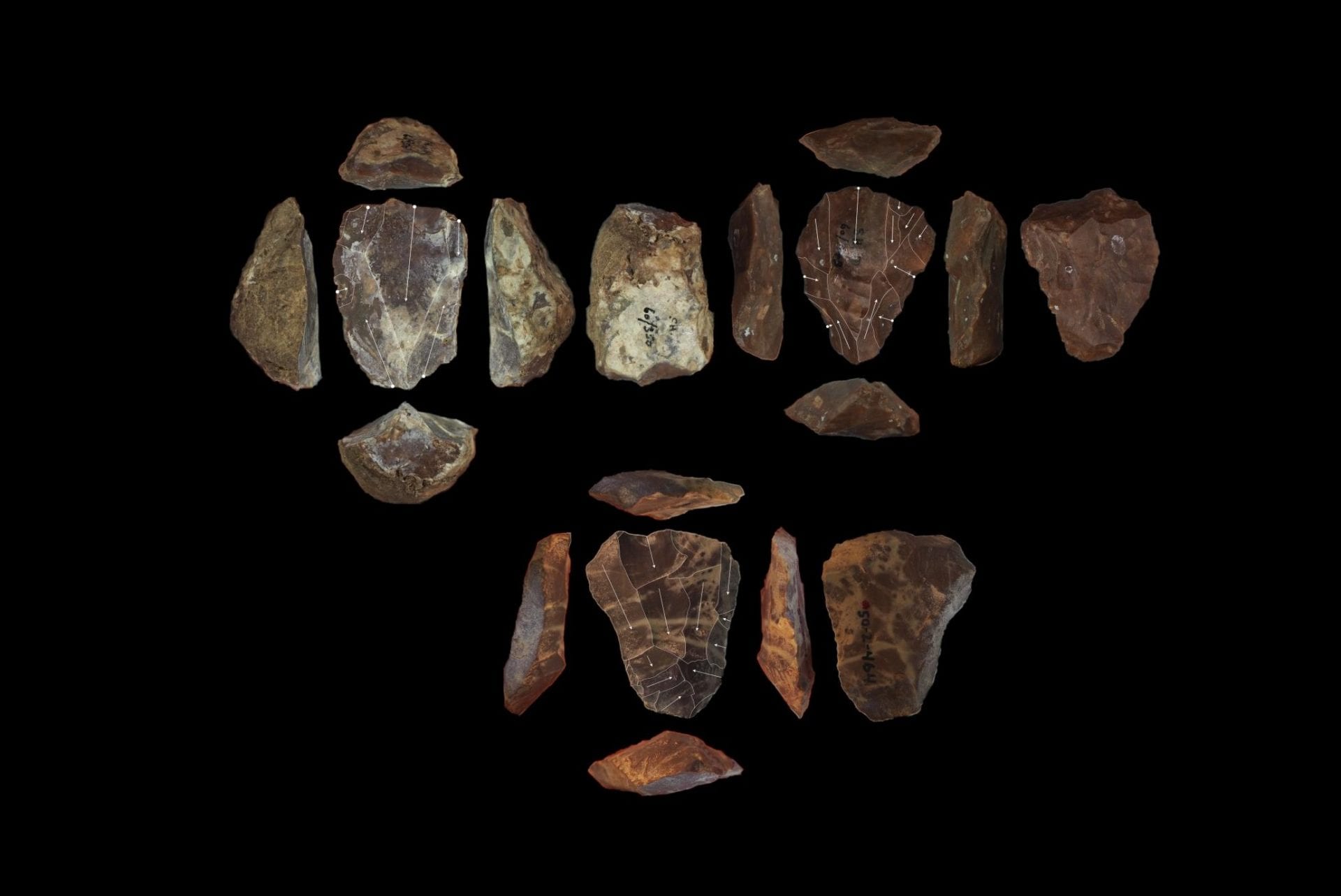Long held in a private collection, the newly analysed tooth of an approximately 9-year-old Neanderthal child marks the hominin’s southernmost known range.
Analysis of the associated archaeological assemblage suggests Neanderthals used Nubian Levallois technology, previously thought to be restricted to Homo sapiens.
With a high concentration of cave sites harbouring evidence of past populations and their behaviour, the Levant is a major centre for human origins research. For over a century, archaeological excavations in the Levant have produced human fossils and stone tool assemblages that reveal landscapes inhabited by both Neanderthals and Homo sapiens, making this region a potential mixing ground between populations. Distinguishing these populations by stone tool assemblages alone is difficult, but one technology, the distinct Nubian Levallois method, is argued to have been produced only by Homo sapiens.
In a new study published in Scientific Reports, researchers from the Max Planck Institute for the Science of Human History teamed up with international partners to re-examine the fossil and archaeological record of Shukbah Cave. Their findings extend the southernmost known range of Neanderthals and suggest that our now-extinct relatives made use of a technology previously argued to be a trademark of modern humans. This study marks the first time the lone human tooth from the site has been studied in detail, in combination with a major comparative study examining the stone tool assemblage.
“Sites where hominin fossils are directly associated with stone tool assemblages remain a rarity – but the study of both fossils and tools is critical for understanding hominin occupations of Shukbah Cave and the larger region,” says lead author Dr Jimbob Blinkhorn, formerly of Royal Holloway, University of London and now with the Pan-African Evolution Research Group (Max Planck Institute for the Science of Human History).
Shukbah Cave was first excavated in the spring of 1928 by Dorothy Garrod, who reported a rich assemblage of animal bones and Mousterian-style stone tools cemented in breccia deposits, often concentrated in well-marked hearths. She also identified a large, unique human molar. However, the specimen was kept in a private collection for most of the 20th century, prohibiting comparative studies using modern methods. The recent re-identification of the tooth at the Natural History Museum in London has led to new detailed work on the Shukbah collections.
“Professor Garrod immediately saw how distinctive this tooth was. We’ve examined the size, shape and both the external and internal 3D structure of the tooth, and compared that to Holocene and Pleistocene Homo sapiens and Neanderthal specimens. This has enabled us to clearly characterise the tooth as belonging to an approximately 9 year old Neanderthal child,” says Dr. Clément Zanolli, from Université de Bordeaux. “Shukbah marks the southernmost extent of the Neanderthal range known to date,” adds Zanolli.
Although Homo sapiens and Neanderthals shared the use of a wide suite of stone tool technologies, Nubian Levallois technology has recently been argued to have been exclusively used by Homo sapiens. The argument has been made particularly in southwest Asia, where Nubian Levallois tools have been used to track human dispersals in the absence of fossils.
“Illustrations of the stone tool collections from Shukbah hinted at the presence of Nubian Levallois technology so we revisited the collections to investigate further. In the end, we identified many more artefacts produced using the Nubian Levallois methods than we had anticipated,” says Blinkhorn. “This is the first time they’ve been found in direct association with Neanderthal fossils, which suggests we can’t make a simple link between this technology and Homo sapiens.”
“Southwest Asia is a dynamic region in terms of hominin demography, behaviour and environmental change, and may be particularly important to examine interactions between Neanderthals and Homo sapiens,” adds Prof Simon Blockley, of Royal Holloway, University of London. “This study highlights the geographic range of Neanderthal populations and their behavioural flexibility, but also issues a timely note of caution that there are no straightforward links between particular hominins and specific stone tool technologies.”
“Up to now we have no direct evidence of a Neanderthal presence in Africa,” said Prof Chris Stringer of the Natural History Museum. “But the southerly location of Shukbah, only about 400 km from Cairo, should remind us that they may have even dispersed into Africa at times.”
Header Image Credit : Blinkhorn, et al., 2021 – CC BY 4.0





